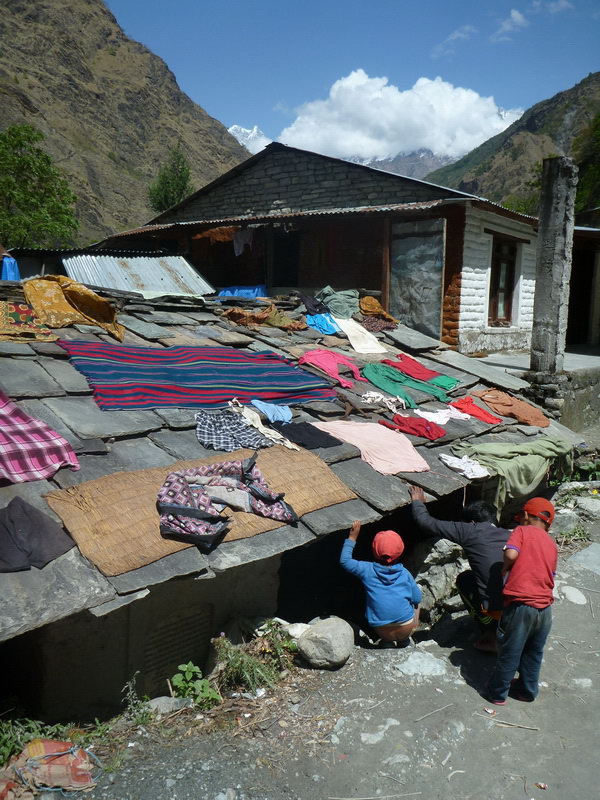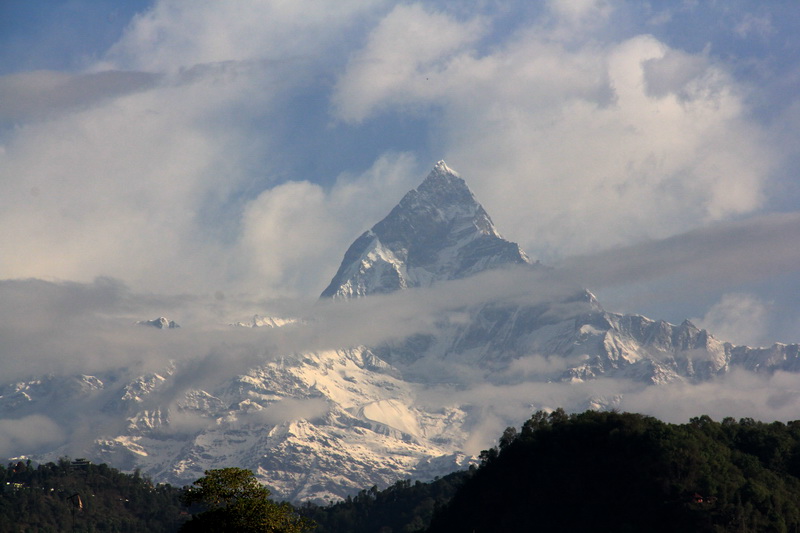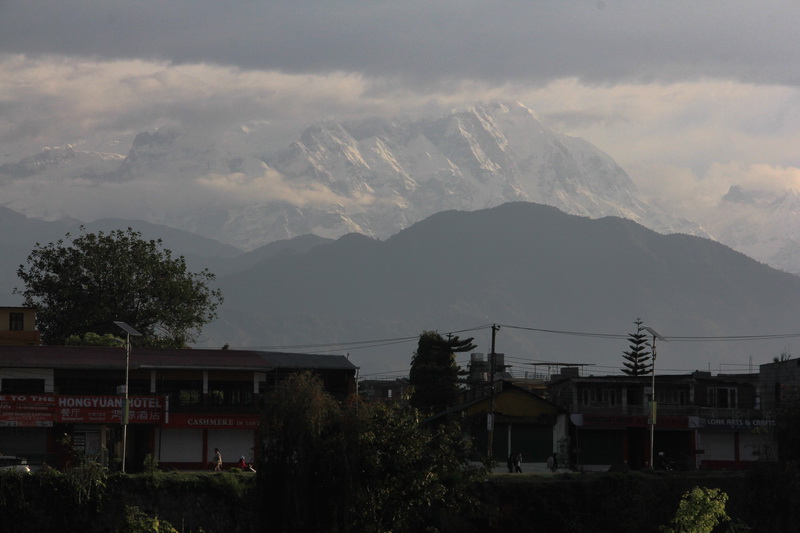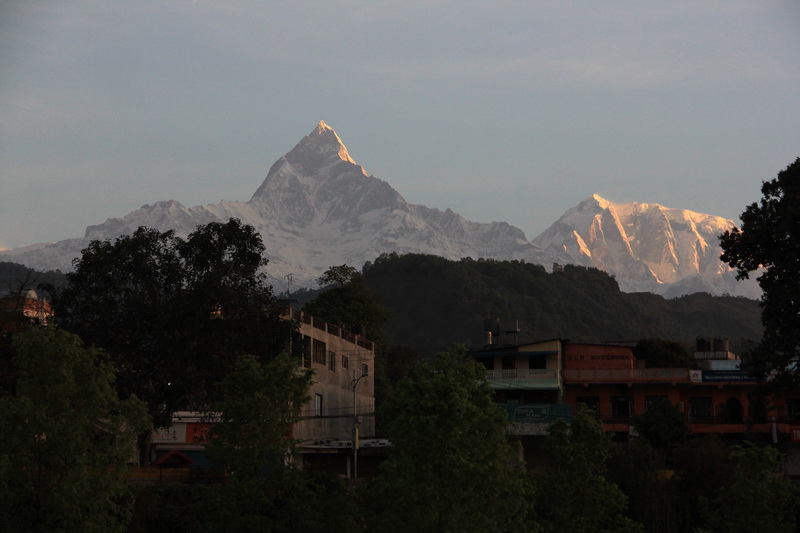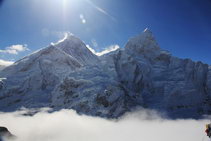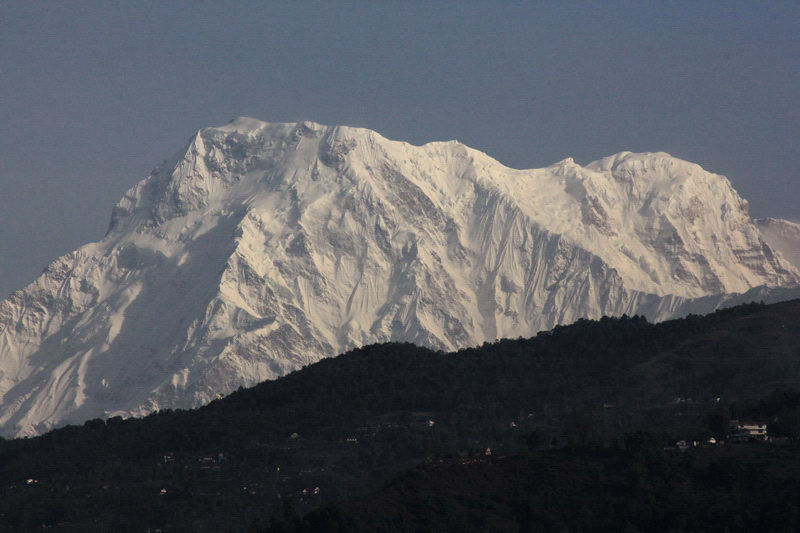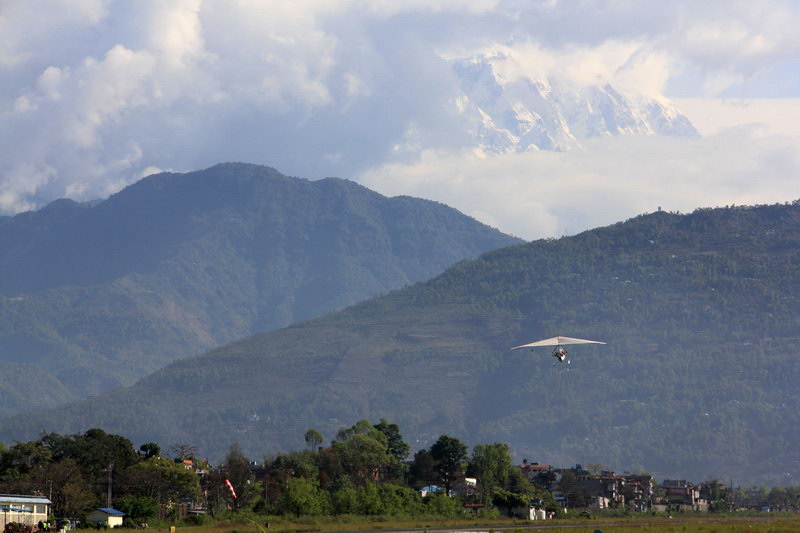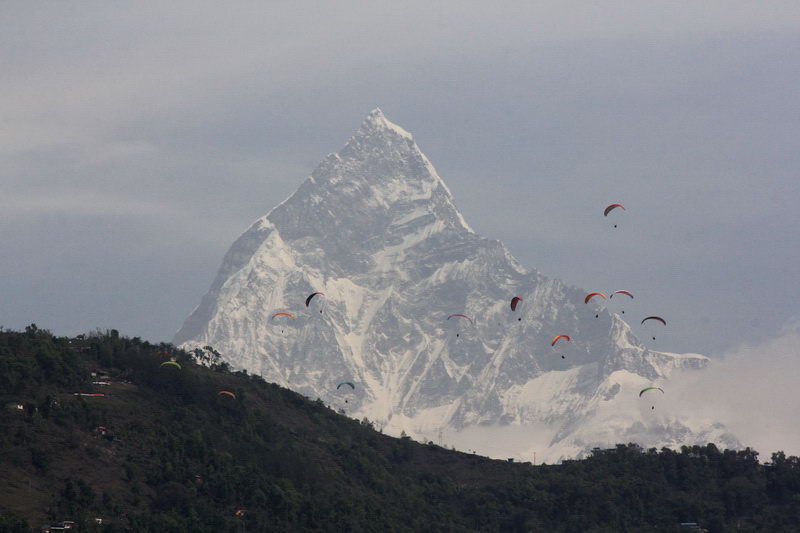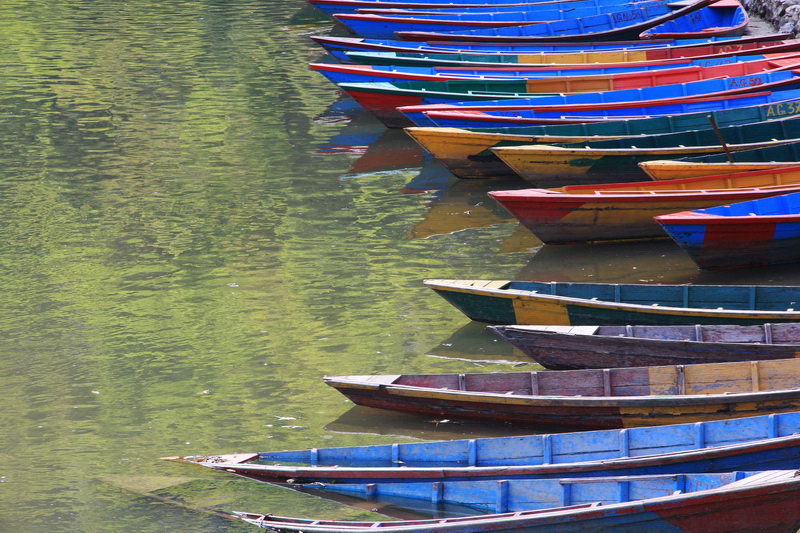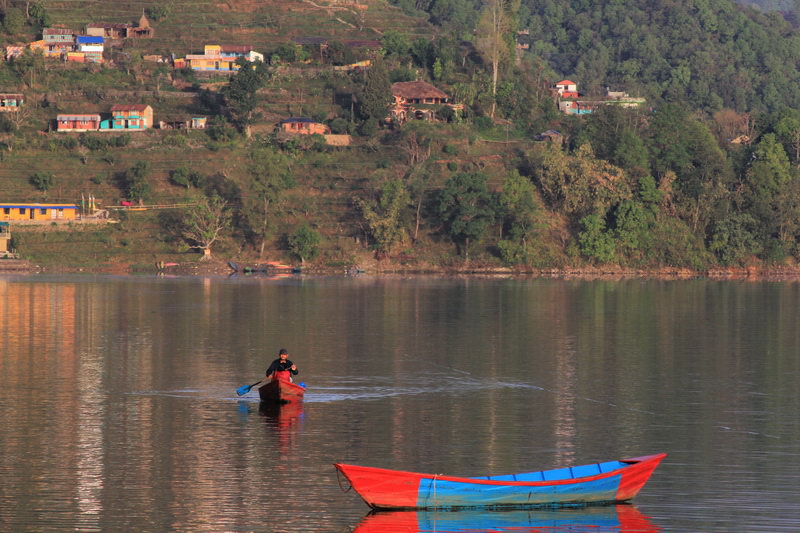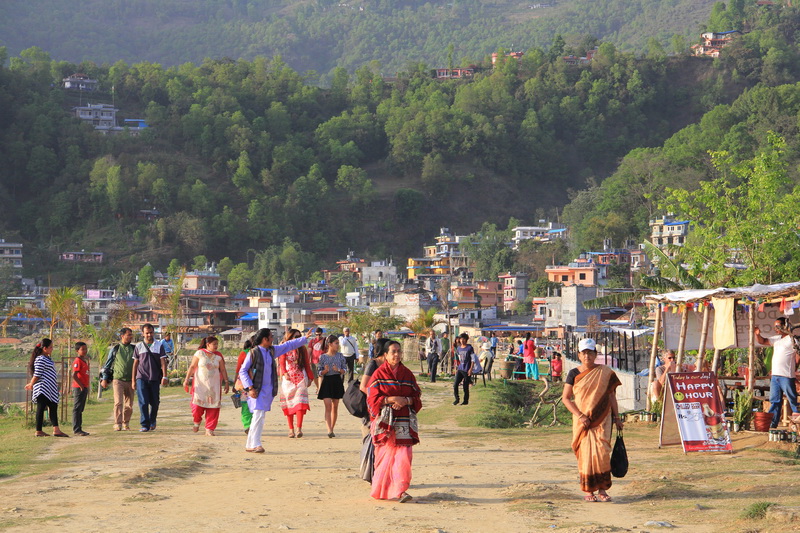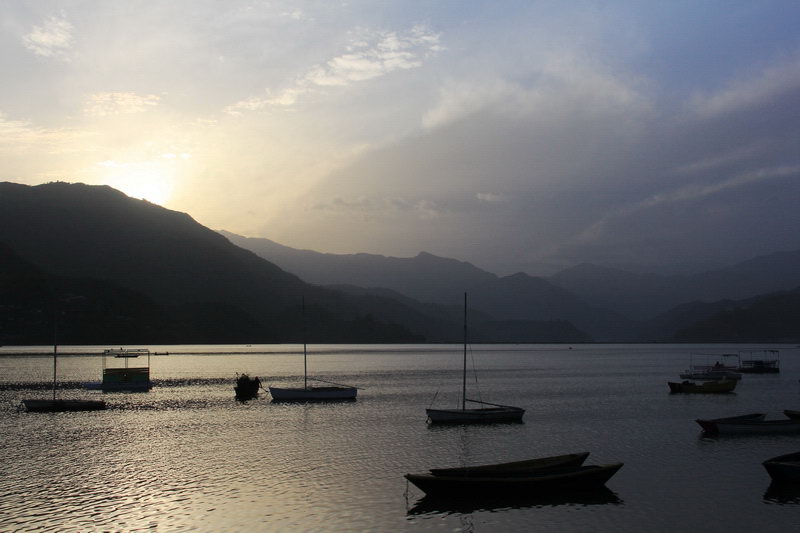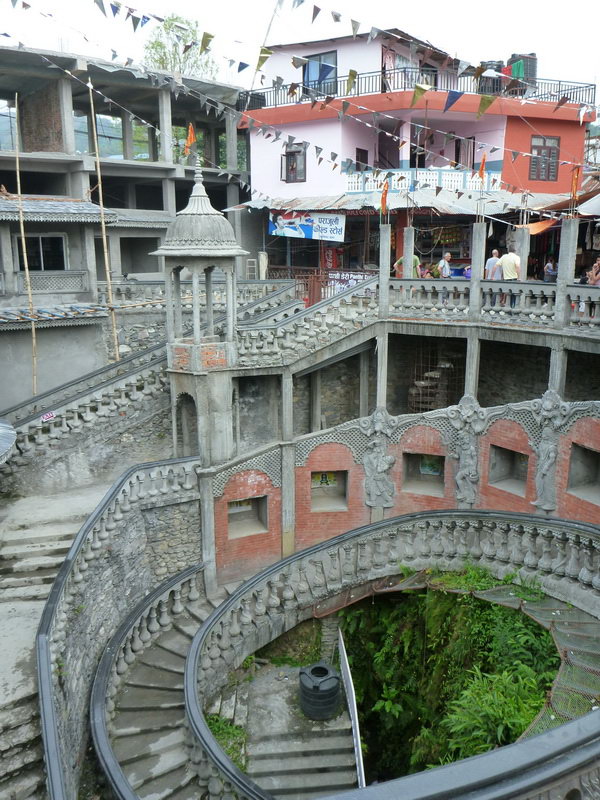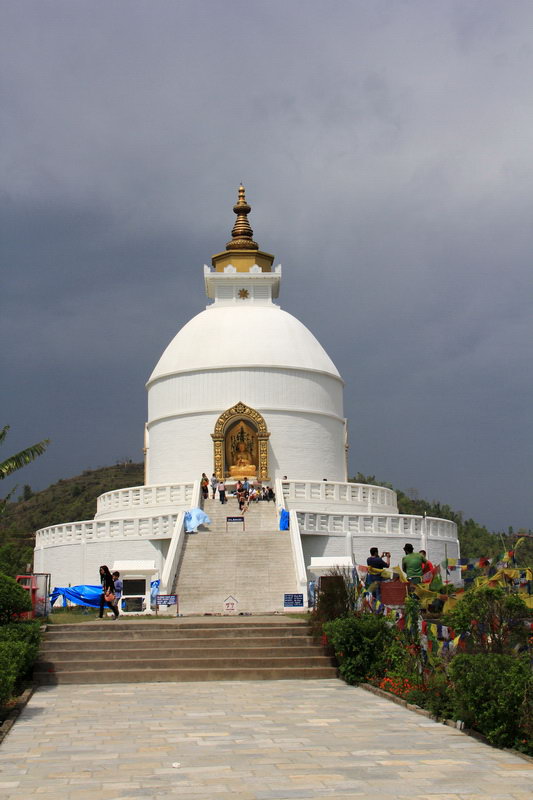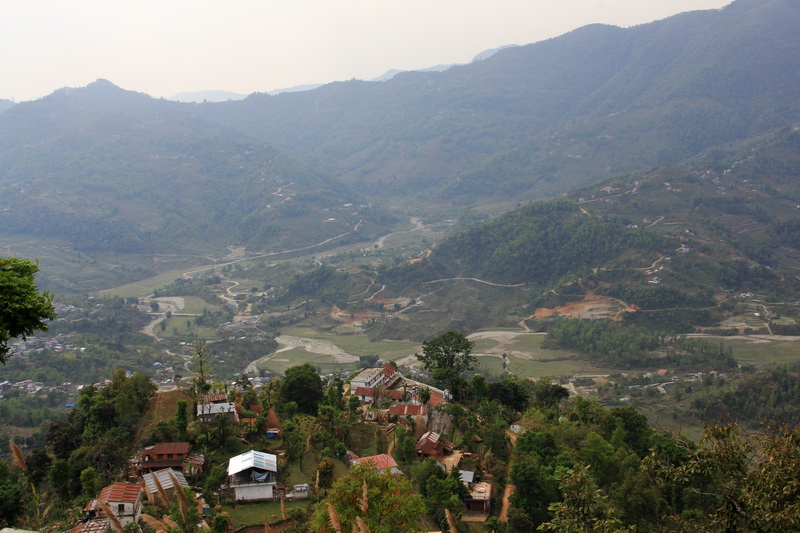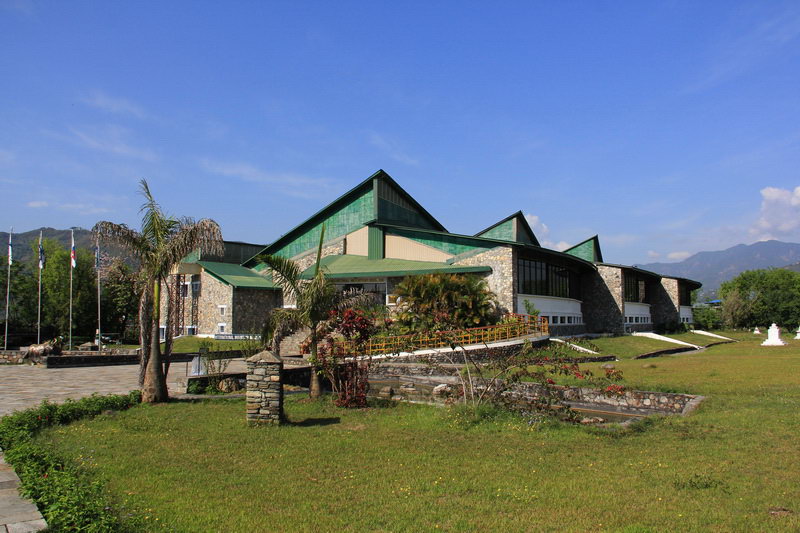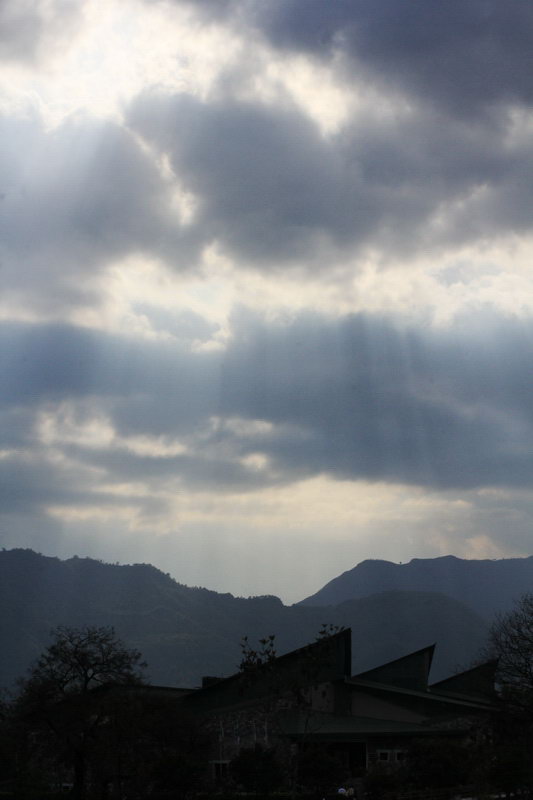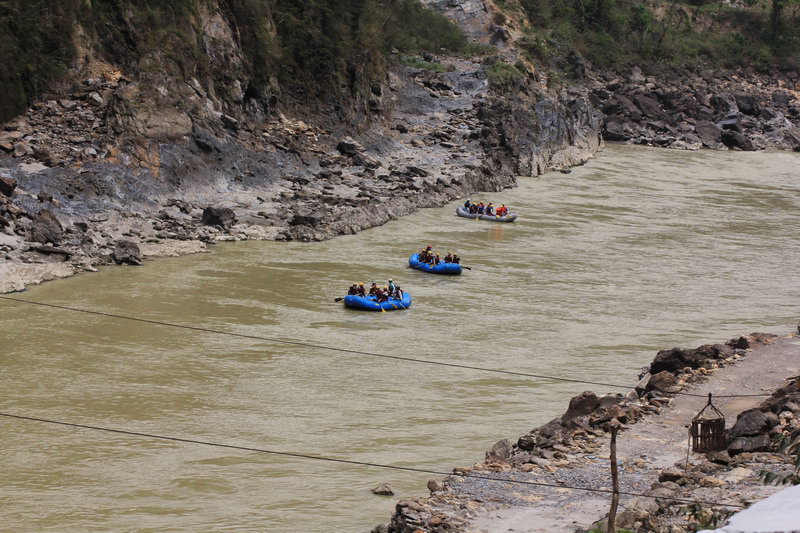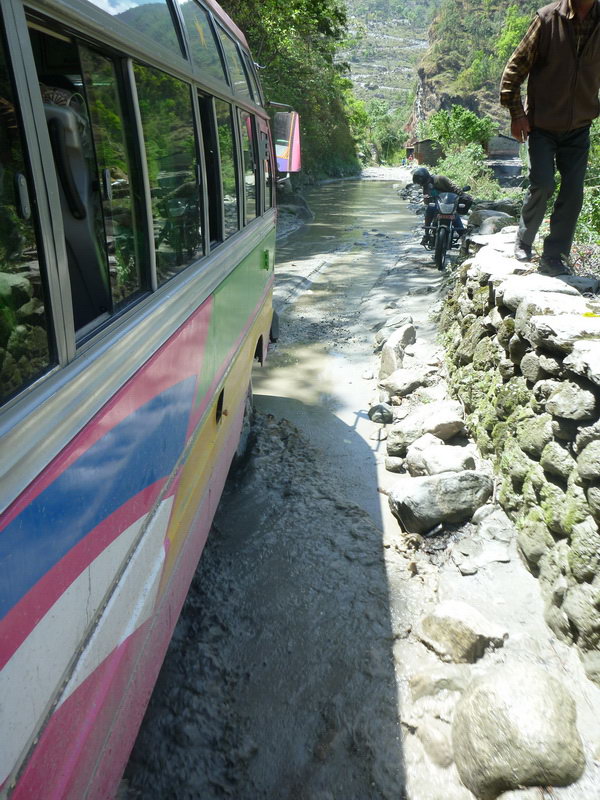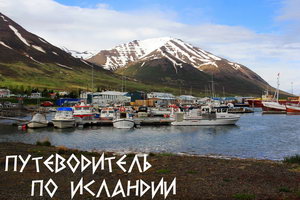Pokhara is a quiet and pleasant Nepalese town located on the shores of Lake Fewa in a huge green valley surrounded by mountains. Pokhara is the second largest city in Nepal, the city has a population of about 250 thousand people, the first place is occupied by the capital of Nepal — Kathmandu. The city is one of the most popular tourist destinations in the country. It attracts many people with its mild subtropical climate and surrounding nature.
Pokhara offers a great view of the Himalayas, namely the Great Himalayan Range. In good weather, three peaks above 8000 m can be seen at once, namely: Annapurna 1 (8091m), Dhaulgiri (8167m) and Manaslu (8156m). By the way, Annapurna 1 is the first eight—thousandth mountain that was climbed, Maurice Herzog was able to climb to the top in 1950, and until that moment there was an opinion in climbing circles that climbing above 8000 m was in principle not possible. Later, Herzog wrote an excellent book about the Annapurna expedition, which is worth reading to anyone interested in mountains. And in the foreground stands the pyramid of Machapuchare Mountain (Fishtail).
The main concentration of tourists is observed in the Lakeside area, as the name implies, this area is located on the shore of Lake Fewa. All hotels, cafes, restaurants, travel agencies and numerous equipment and souvenir shops are located here.
How to get
There are several ways to get to Pokhara from Kathmandu. The most expensive but fastest is by plane, there is an airport in Pokhara, but it only serves domestic flights (not international ones). You can also get from Kathmandu by bus, in Thamel (Kathmandu tourist area) all travel agencies offer various transfer options to Pokhara, you can also buy bus tickets yourself at the new bus station, it will be much cheaper. The journey time is 5-7 hours. We got to Pokhara after the end of the track around Annapurna in the spring of 2015, you can read more about the track here.
In Pokhara, everyone will find something to do: from here you can go hiking in the mountains or leisurely walk along the lake shore, here you can master paragliding or learn how to ride a pony, many come to Pokhara to study yoga and meditation or just take a break from the hustle and bustle of their daily lives.
The sights of Pokhara
So, what can you do in Pokhara and its surroundings:
1. The first and main thing that attracts tourists to Pokhara and Nepal in general is, of course, trekking in the Himalayas. To do this, there is everything you need: an extraordinarily beautiful nature reserve in the area of the Annapurna massif, a variety of hiking routes for every taste, duration and physical fitness, an insane number of shops with tourist clothing and equipment, affordable prices for guide services, dozens of agencies that will help you organize a hike and arrange all the necessary paperwork for this.
If you are going to use the services of travel agencies and take a guide, expect that the pleasure will cost you about $ 30-40 per day of the route per person (food and accommodation - $ 15, a guide - $ 20, plus if you want to use the services of a porter, then add another $ 10-15). Additional expenses are a permit to visit the protected area near the Annapurna massif (the so–called "permit"), which costs 2,000 rupees per person ($20). We have already written how to get a permit in the article
Preparing for trekking in Nepal, everything you need to know
This year we walked the track around Annapurna in Nepal and the track from Jiri to Everest Base Camp through the Gokyo Lakes and we want to share the nuances of these tracks.
Since we do no...
Many people go to the mountains on their own, if you are one of them, get a route map and choose any one to your liking. For an independent hike, in addition to a permit, you will need to issue a TIMS (registration card of an individual tourist). All this can be arranged independently or with the help of any travel agency (but for an additional fee). Right there on the Lakeside, you can buy all the necessary equipment, many shops offer fakes of equipment of world-famous brands. Absolutely everything is forged, starting with socks and ending with backpacks and down overalls for high-altitude climbing. The quality of the fakes is different, sometimes there are good things. I would not buy shoes or a backpack here, but all sorts of fleeces, pants, hats and other small things can be found at a good price, the main thing is not to forget to bargain, sometimes the price drops two or more times when bidding. When the seller stops smiling and loses interest in you, it means that the price is approaching the real one.
2. Pokhara is a favorite place for paragliders. In the dry season, there are practically no non-flying days here, so gliders, paragliders and other aircraft of all colors and sizes hover over hills and lakes, catch updrafts, perform aerobatics against the background of snow-capped peaks, plan over meadows and terraces to the envy of all pedestrians. Many travel agencies offer flights on paragliders, hang gliders and other plans. You can just fly with an instructor, or you can take a training course and fly on your own, although such a course costs very little.
3. As already mentioned, Pokhara is located on the shore of Lake Phewa, it is a fairly large lake, about 5 kilometers long and up to 3 kilometers wide. There are several boat rental points on the Lakeside promenade where you can swim on the lake. The rental cost is 900 rupees per day ($9) or 300 rupees ($3) per hour, prices vary slightly depending on the place, you can also hire a person who will row instead of you, in general, you can choose the ideal option for a walk to your taste. The lake offers magnificent views of the snowy peaks, which sparkle against the blue sky. There is also a Hindu temple on a small island in the middle of the lake, which can only be reached by boat. Regular boats also go to it from the pier in the center of Lakeside.
4. You can also walk along the embankment of Lake Fewa. A pedestrian path has been made along the shore. In the late afternoon, a large number of tourists and locals come out here. It is very pleasant to sit on the grass and watch the sunset. And there are also many cafes, souvenir shops and kiosks with tropical fruits (bananas, oranges, mangoes, papayas, pineapples, etc.)
5. Davis Falls. Not really a waterfall, rather a small river or stream that flows through the canyon and then falls into a hole in the ground (like a cave) forming a waterfall. It got its name after the tourist girl Davis swam in the river, was washed into this hole and died. It is impossible to look into the hole due to the fact that it is fenced with railings, and the view itself is not particularly impressive, but since the entrance is not expensive 30 rupees (0.3 $) and the waterfall is still on the way to the Stupa of Peace, then it is worth going to look at it. After falling into the cave, an underground Seti river is formed, to which you can also descend (but where and how we did not find out).
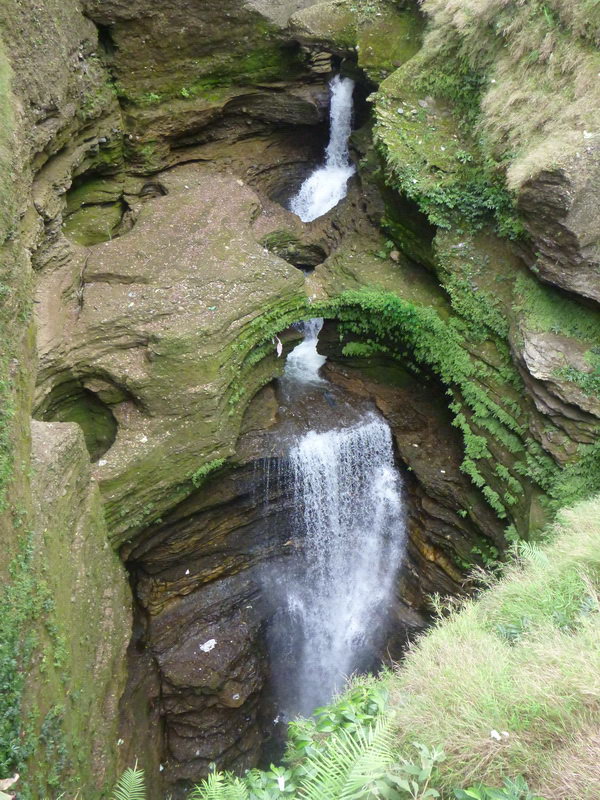
There is also a Hindu temple located in a cave across the street from it, but since we are not very interested in religion, and we have already seen enough temples, we decided not to enter it (by the way, the entrance costs, it seems, 100 rupees). The waterfall is located two kilometers from the airport, on the Butwal road, near Tashi Ling Tibetan camp.
6. The Pagoda of Peace (World Peace Pagoda) The Peace Pagoda was built by Buddhist monks from a Japanese organization to bring peace to the masses. The pagoda is located on a hilltop on the opposite shore of the lake from Lakeside. You can climb up to it along the trail directly from the shore of the lake, but you still need to get there by boat, and in one place we met information that "romantics from the high road" meet on this trail, it's hard to believe, but we didn't check. The second option is to go around the lake in a circle and climb from the opposite side of the hill. You need to take a bus from Lakeside, asking the conductor before boarding that you will get to Davis Falls. From this stop, you need to walk a little further along the road ahead. There are several roads and trails of varying length and steepness leading up. The easiest way is to navigate by Google maps or ask the locals. The pagoda is located on a hill and therefore the view from there is unforgettable, if of course the weather is good. They say the landscape is especially beautiful at sunset - the snow-white structure harmonizes with the clear blue sky and rich green grass. Walk around the center of the pagoda counterclockwise and you will see the four incarnations of the Buddha.
7. The International Museum of Mountains. The best place for a museum of mountains and mountaineering is in Nepal, because almost all the highest peaks of the world are located here, the first eight-thousandth peak was conquered here, Mount Everest is located here, and in general the whole country is in the mountains. The museum is located on the outskirts of the city, behind the airport, you can get there by taxi, or on foot (if you have the time and desire). The museum occupies a fairly large area with a beautiful park. In the center there is a two-storey building, oddly shaped, with photographs, facts and objects of the greatest ascents and people who conquered the peaks of the world. Also, the equipment from the very first conquests of the Himalayas has been preserved here. The museum contains a lot of interesting things about the flora and fauna, geology, ecology and development of the Himalayan region. A 21-meter climbing wall has been constructed for amateur climbers, as well as a 9.5-meter-high model of Manaslu Mountain. In front of the entrance to the museum there is a monument dedicated to all those who died in the mountains. A ticket for foreigners costs 400 rupees ($4), the museum is open from 9 a.m. to 5 p.m. seven days a week. There is a cafe on site with fairly affordable prices.
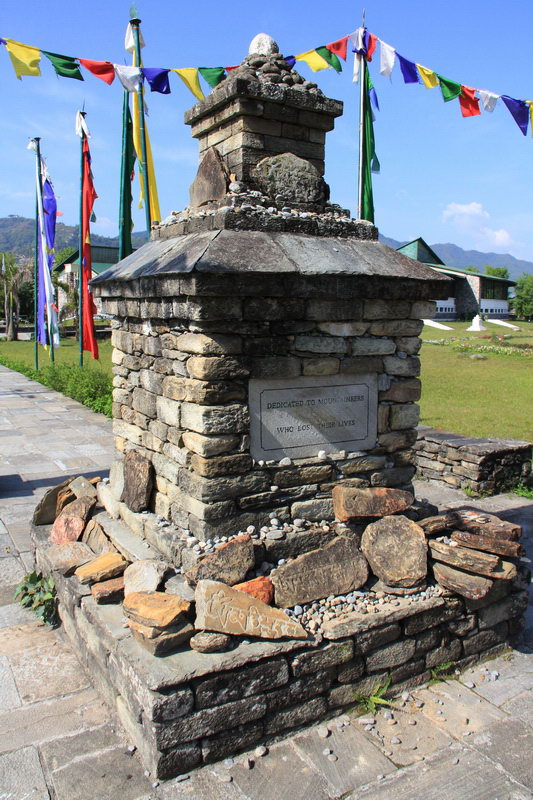
8. Sarangkot Peak. This is the highest peak in the vicinity of the city and offers a magnificent view of the Annapurna mountain range and Pohkara itself. There are several ways to climb to the top of Sarangkot. The main one starts on the slopes from the Bindi Basini Temple. You can get here by any city taxi, but then the road is very bad. From this point, the ascent to the top takes about an hour of leisurely walking. There are several small hotels near the temple where you can spend the night. Some tourists start climbing at 4 a.m. to catch the sunrise. At this time, Sarangkot offers stunning views of the Himalayas in the clear morning light and the city of Pokhara waking up at the foot.
9. Nepal is covered by a network of fast and cool mountain rivers, ideal conditions for rafting here. A lot of tourists go to Pokhara precisely in order to rafting on stormy rivers through rapids. Here you will be offered a huge number of rafting options, from relatively calm to fast-paced and exciting, it all depends on your experience and preferences.
You can also rent a bike, a moped or even a motorcycle in Pokhara. And go to the Nepalese countryside, look at the life of the local population. Just keep in mind that the roads here all pass through the mountains, and the quality of the coating leaves much to be desired, often there is simply no asphalt.
